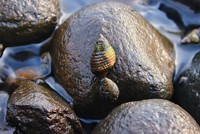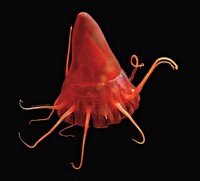Advertisement
Grab your lab coat. Let's get started
Welcome!
Welcome!
Create an account below to get 6 C&EN articles per month, receive newsletters and more - all free.
It seems this is your first time logging in online. Please enter the following information to continue.
As an ACS member you automatically get access to this site. All we need is few more details to create your reading experience.
Not you? Sign in with a different account.
Not you? Sign in with a different account.
ERROR 1
ERROR 1
ERROR 2
ERROR 2
ERROR 2
ERROR 2
ERROR 2
Password and Confirm password must match.
If you have an ACS member number, please enter it here so we can link this account to your membership. (optional)
ERROR 2
ACS values your privacy. By submitting your information, you are gaining access to C&EN and subscribing to our weekly newsletter. We use the information you provide to make your reading experience better, and we will never sell your data to third party members.
Biological Chemistry
Heart Lessons From Spilled Oil
Crude oil compounds block ion channels in tuna heart cells, shedding light on link between air pollution and heart disease
by Deirdre Lockwood
July 14, 2014
| A version of this story appeared in
Volume 92, Issue 28

It’s never a good moment for disaster to strike, but the timing of the Deepwater Horizon oil spill in the Gulf of Mexico was particularly unfortunate for one of the region’s most commercially valuable fish populations. When BP’s Macondo well blew in April 2010, it was peak spawning season for the Atlantic bluefin tuna. The tuna, which can live up to 35 years and grow as big as a Volkswagen bug, migrate from waters off the Canadian Maritimes to the warm Gulf each year to breed.

Barbara A. Block, an expert in tuna physiology at Stanford University, had electronically tagged the fish and knew that they spawn in the area where the spill occurred. She was immediately concerned that the spilled crude oil would threaten the eggs and larvae of the fish.
She had reason to worry. A similar scenario had played out 21 years earlier, when the Exxon Valdez ran aground and spilled 11 million gal of crude oil into Alaska’s Prince William Sound. The oil floated and washed up on the shore into spawning habitat for pink salmon and herring, causing their embryos to die at much greater rates than usual. Many of those that survived had spinal deformities, small eyes and jaws, and fluid accumulation around their hearts, further increasing their mortality rate.
At the time, National Oceanic & Atmospheric Administration (NOAA) researchers sprang into action to figure out how crude oil was damaging the salmon and herring. Building on more than a decade of field and laboratory studies that followed the spill, the next generation of NOAA scientists implicated certain tricyclic polycyclic aromatic hydrocarbons (PAHs) in crude oil. The three classes of compounds—phenanthrenes, fluorenes, and dibenzothiophenes—are enriched as oil weathers.
The scientists showed that these PAHs damage the developing hearts of fish embryos, causing arrhythmias that can lead to the developmental defects they observed and eventually kill the fish (Environ. Sci. Technol. 2009, DOI: 10.1021/es802270t). They have seen this syndrome of effects in every fish species they have exposed to crude oils from different geological sources worldwide, says Nathaniel L. Scholz, manager of the Ecotoxicology Program at NOAA’s Northwest Fisheries Science Center in Seattle.
So after the Deepwater Horizon spill, Scholz and his colleagues suspected that the syndrome could strike bluefin tuna. But it was impossible to determine how the spill might have affected tuna embryos and larvae in the field, Block says, because tuna spawn in the open ocean. “We hardly understand how to be at the right place and time to find those larvae,” she says. By combining NOAA’s knowledge of crude oil toxicology with Block’s expertise and resources at the Tuna Research & Conservation Center, where tuna are maintained in captivity, the team set out to tackle the question in the lab. In the process, they not only showed that tuna are vulnerable to crude oil in a way similar to other fish but also discovered the mechanism by which this happens. The findings could clarify the impact of oil pollution on other fish species and even shed light on the link between air pollution and human heart disease.

Australia and Panama have some of the only facilities in the world where researchers have coaxed the “lions and tigers of the sea,” as Block calls bluefin tuna, to spawn in captivity. The NOAA-Stanford team got bluefin, yellowfin, and amberjack tuna eggs from both labs and exposed them to crude oil at concentrations within the range measured in their Gulf spawning habitat during the spill, 1–15 μg/L total PAHs (Proc. Natl. Acad. Sci. USA 2014, DOI: 10.1073/pnas.1320950111). As the tuna developed, fluid accumulated around their hearts, similar to the pink salmon and herring studied after the Valdez spill. Their hearts beat more slowly, eventually leading to arrhythmia. The severity of the effects increased with increasing doses of PAHs.
But the team still didn’t understand how the compounds were targeting the heart. So Block and her colleagues isolated heart muscle cells from juvenile tuna that had been captured in the wild and exposed them to samples of crude oil collected from the Deepwater Horizon spill. These samples were also rich in the three tricyclic PAHs the NOAA researchers had identified.
The team found that compounds in crude oil are “acting like pharmacological drugs,” Scholz says, by disrupting the normal flow of ions in the heart muscle cell. For the cell to beat properly, voltage-gated calcium and potassium ion channels must open and close. But when the cells were exposed to crude oil, the potassium channel was blocked, preventing ions from exiting and the cell from repolarizing for another beat. The researchers hypothesize that tricyclic PAHs are responsible for the cardiac effect given the high proportion of them present in the crude oil. Fittingly, the study was published on Valentine’s Day (Science 2014, DOI: 10.1126/science.1242747).

To Richard T. Di Giulio, an environmental toxicologist at Duke University who was not involved in the studies, the work highlights how vulnerable important fish species such as tuna are to oil spills in their early life stages.
Block and her team are now analyzing telemetry data of tagged bluefin tuna in the Gulf from before, during, and after the spill to estimate how the population has been affected. They plan to report their results later this year.
But the team’s mechanistic discovery could also help clarify a major human health problem: the link between air pollution and heart disease. Epidemiological studies have established that exposure to air pollutants such as fine particulate matter can trigger cardiovascular disease, including arrhythmias and heart attacks. But how remains unclear.
It could involve the same three classes of tricyclic PAHs that the NOAA researchers have linked to heart disease in fish, Block suggests. All three are abundant in vehicle exhaust and in wood smoke.
The ion channels targeted by these PAHs in tuna heart muscle cells are highly conserved across vertebrates, including humans, Block explains. She suggests these tricyclic PAHs might have an underappreciated role in the connection between air pollution and human heart disease. “Could this be the smoking gun of why it is that air pollution causes arrhythmia?”
Previous efforts to probe how PAHs might influence human health have mainly focused on cancer—a connection that was established partly through studies of lung cancer in chimney sweeps. Scientists now know that certain high-molecular-weight PAHs—those with four or more rings—are carcinogens. In contrast, the lower-molecular-weight compounds, made up of two or three rings—including the three classes that cause cardiac toxicity in fish—are thought to affect the respiratory, cardiovascular, and neurological systems. But the mechanisms by which they do so are still being investigated.
In the case of heart disease, “we’re providing a clear mechanism to be explored,” says Block.
Di Giulio says that the connection is intriguing and makes sense mechanistically, but “it’s a huge jump to go from an in vitro study to what goes on in vivo, and particularly to extrapolate that to human health.”
There are important differences in exposure to the compounds between fish and humans, especially during early life stages, he notes. Fish eggs are bathed in the harmful compounds. In contrast, humans breathe them in. What’s more, a developing fetus is protected by the mother’s liver.
But given the limited understanding of the connection between PAHs in air pollution and human heart disease, fish studies are a valuable way forward, he says. It is much easier to study the developing heart in fish than in mammals. “You can just see the heart. It’s really hard to look at a developing mouse heart, let alone a human heart.”
Solving A Salmon Riddle
If you live in a city, there are little oil spills around you every day. Gas and diesel and their combustion products accumulate on roadways, and when it rains the pollution is washed into local waterways. Several years ago Nathaniel L. Scholz, who manages the Ecotoxicology Program at NOAA’s Northwest Fisheries Science Center in Seattle, and his colleagues realized that their oil-spill research might help them solve a problem that they have struggled with for nearly a decade: the mystery of the dying salmon.
In urban areas of the Pacific Northwest, some 40 to 90% of coho salmon are dying off before they can spawn when they return to local streams from Puget Sound. Early on, Scholz’s team at NOAA ruled out the usual suspects as an explanation, including disease, water temperature, and nutrient or oxygen levels. Then they did a land-use analysis and found that fish kills were higher in watersheds with greater pavement coverage.
They wondered if polycyclic aromatic hydrocarbons (PAHs) or toxic metals carried into urban streams by stormwater runoff from roads could be responsible. “If you look at the chemical profile of stormwater runoff, you get many of these compounds that we have identified as the cardiotoxic fraction for fish in oil-spill studies,” Scholz says.
When they exposed salmon to stormwater collected from highway runoff, the salmon died. But when they poured the same water through a soil column and then exposed the fish to the flow-through, the fish survived.
“So we swung for the fences,” Scholz says. They created an artificial cocktail of metals and PAHs and exposed salmon to it. But to their surprise, the fish survived. They’ve concluded that although the metals and PAHs may be part of the problem, they are not sufficient to cause premature death. They have returned to a broad-scale analysis of other potential stressors in runoff, including compounds in tire leachates and engine cleaners.
However, their oil-spill findings may still help them solve the problem. The NOAA and Stanford scientists are developing a suite of genetic markers for PAH exposure that could help them pinpoint the cause of death in the salmon. But to get useful salmon samples for this analysis, “you have to be in the stream at the right time and place where the fish is becoming symptomatic but hasn’t yet died,” Scholz says.
During one large storm event in 2012, they got just what they needed from salmon in Seattle’s Longfellow Creek. The samples are now with their Stanford colleagues, who will do the genetic analysis to understand what was ailing the fish collected. Could it be heart failure? They should have the results later this year.





Join the conversation
Contact the reporter
Submit a Letter to the Editor for publication
Engage with us on Twitter